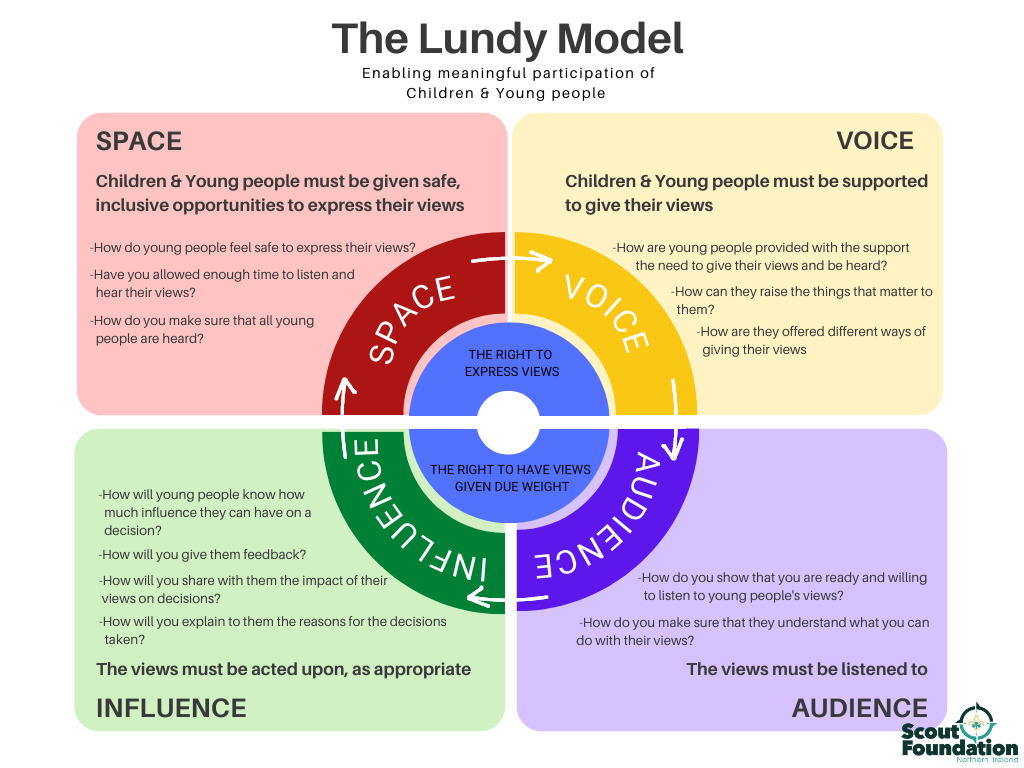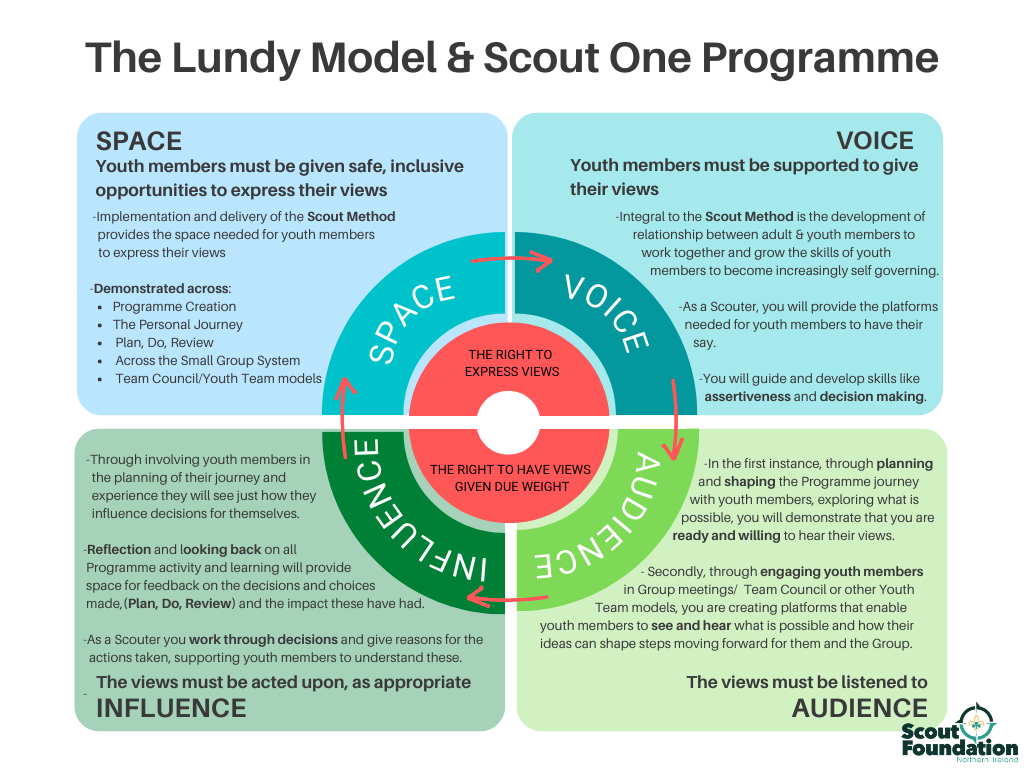Can a simple framework truly revolutionize how we understand and implement children's rights, giving young people a genuine voice in the decisions that affect them? The Lundy Model, developed by Professor Laura Lundy, offers a profound and practical roadmap for ensuring that childrens perspectives are not just heard, but truly valued and acted upon, changing the landscape of child participation worldwide.
The Lundy Model isn't merely an academic exercise; it's a dynamic framework adopted by global organizations, governments, and agencies. Its purpose is clear: to improve the lives of children by championing their right to be heard and involved in matters concerning them. Its a practical conceptualization of Article 12 of the UN Convention on the Rights of the Child, which mandates that governments respect children's views.
The model is now recognised and implemented globally. It's a framework that empowers children to express their views and influence the services and support they receive. The principles behind the model provide a tool for those who want to give children a real voice in shaping the world around them.
| Category | Details |
|---|---|
| Full Name | Laura Lundy |
| Profession | Professor of International Children's Rights |
| Institution | School of Education, Queen's University Belfast |
| Key Contributions | Development of the Lundy Model for child participation, a framework for implementing Article 12 of the UNCRC. |
| Research Focus | Children's rights, child participation, and the application of these principles in various contexts. |
| Noteworthy Publications | Numerous publications focusing on children's rights, particularly on implementing the right to be heard. The 2007 publication in the British Educational Journal. |
| Impact | Her work has influenced policy and practice globally, promoting meaningful child participation in decision-making processes. |
| Associated Concepts | Space, Voice, Audience, Influence (the four key elements of her model). |
| Link to Official Website | Queen's University Belfast Profile |
At its core, the Lundy Model provides a structured approach to child participation, breaking it down into four interconnected elements: Space, Voice, Audience, and Influence. These elements work together to create a comprehensive approach to listening to, understanding, and responding to children's views.
Space refers to the provision of opportunities for children to express their views. This encompasses a safe, accessible, and friendly environment where children feel comfortable sharing their thoughts and feelings. Considerations include the physical environment, the availability of information, and the creation of a culture of respect and trust. This involves ensuring that the venue is accessible, and staff members are trained and supported appropriately.
Voice is about giving children the platform and the skills they need to express themselves. This involves providing them with the means to communicate their views in a way that is appropriate to their age, abilities, and cultural background. It may involve verbal communication, but it may also include art, music, drama, or other creative methods. Furthermore, it is critical to encourage young people to participate by actively asking for their views and creating multiple opportunities for them to express themselves.
Audience is the crucial element of listening and responding to children's views. The audience comprises those who are listening to the children's views, whether they are adults in positions of authority, peers, or other stakeholders. Crucially, it emphasizes the importance of carefully considering what children have to say and taking their perspectives seriously, meaning the audience must be open and receptive to childrens views, demonstrating a willingness to listen and learn. Its about ensuring that the right people are listening and understand what is being communicated.
Influence is the ultimate goal: ensuring that childrens views shape decisions that affect them. This involves taking childrens views into account when making decisions and, where appropriate, acting on their recommendations. Influence means that children see that their voices matter and that their participation leads to real change. The ability of children to see their voices impacting services and support is key.
The model acts as a vital framework for understanding and promoting the childrens right to participation. It also helps to critically examine social identities, power dynamics, exclusion, and inequalities between children and adults.
The Lundy Model has gained recognition and adoption globally. It is used by numerous organizations, governments, and agencies, including the United Nations, and has been endorsed by government departments, such as the Irish Department. This widespread acceptance underscores its effectiveness and relevance in the field of children's rights. It has transformed how children's views and experiences are valued at the United Nations. The implementation of this model has supported governments and international organisations to ensure children are involved in all aspects of decision-making.
Organisations use it to review their practices, such as: Have young people been asked for their views? How many opportunities have there been? Is the venue accessible, friendly, and safe? Are the staff team trained and supported appropriately? These questions are fundamental to the implementation of the model.
The Lundy Model provides a framework for coaches, governments, sports councils, and national governing bodies, encouraging participation and championing the rights of children and young people. It can be applied in different contexts. It guides the understanding of child participation based on the definitions provided by the CRC and UN Committee on the Rights of the Child. The model ensures the right of children to have a voice. The model helps children and young people express their views and influence the services and support they receive.
This model was developed by Professor Laura Lundy, as a framework for coaches to follow to encourage participation and champion the rights of children and young people. It is a practical tool for anyone working with children and young people to better understand and implement children's rights, particularly those related to participation. The model helps to ensure that children's perspectives are not only heard but also valued and acted upon, fostering a more inclusive and child-centered approach. The model lays out the components of meaningful child participation. It uses a policy analysis of childrens rights to participate and focuses on four interrelated elements of Article 12s provisions.
The 2019 study critiqued the model for overlooking the emotional aspects of participation, highlighting the importance of creating a safe space. The model's enduring influence is evident in discussions on child participation, guided by the Lundy Model. The Lundy Model of child participation was developed by Laura Lundy, Professor of International Children's Rights at the School of Education at Queen's University of Belfast, providing a way of conceptualising a child's right to participation.
The Lundy Model provides a way of conceptualising a child's right to participation, as laid down in Article 12 of the UN Convention on the Rights of the Child. Since UNICEF UK is a childrens rights organization, it uses the model, which is rooted in rights and used by many other organizations around the world. The Lundy Model of Participation (2007) provides a way of conceptualising a child's right to participation. In the article, the model will be used as a guide to understanding child participation based on the definitions provided by the CRC and UN Committee on the Rights of the Child. Lundys model conceptualises the key elements. The Lundy Model there are lots of models to describe how one can go about respectfully engaging different communities. Our participation strategy, launched in 2024, has children and young people at its heart. It explains how our work is strengthened by adopting the Lundy Model of participation.


